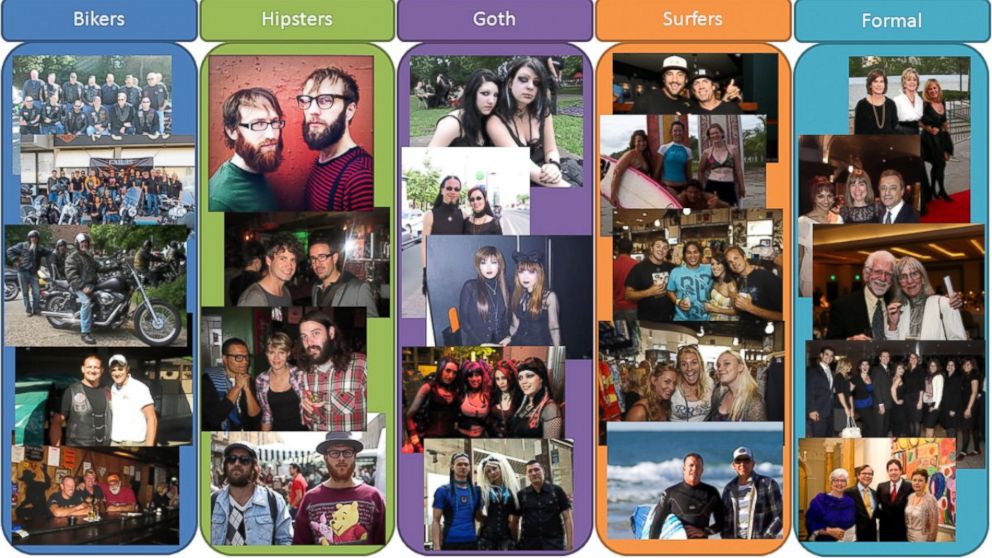Computer Program That Can Tell If You’re a Hipster
It can also tell if you're a raver, a surfer, or a goth.

Dec. 11, 2013— -- Hipsters are similar to pornography. They’re both difficult to define, but people recognize it when they see it.
Can a piece of software do the same thing? According to Serge Belongie, a professor of computer science at University of California, San Diego, it’s entirely possible for computers to identify hipsters based on their photos.
Belongie said he was inspired by a particular type of photo popping up more and more frequently on Facebook. “It was the group shot where people are eating dinner and someone says, ‘Hey! Let’s take a photo!’” he told ABC News. “There’s something about those photos that pop out and says what type of people they are.”
In addition to hipsters, Belongie’s software also recognizes other types of “urban tribes,” such as bikers, ravers, surfers and goths, among others. It does so not just by looking at faces, as Facebook and Google+ does in order to tag photos, but by looking at the whole body. “It looks for the body and the limbs and then extracts features,” said Belongie. However, instead of going in with a checklist of features (like a scruffy beard or a plaid shirt when searching for hipsters), the software instead learns as it makes decisions, he said.
To start, the program was force fed hundreds of photos tagged with one of eleven different urban tribe labels. Then it looks for the common thread that runs through a tribe's photos. “Suppose that every surfer image has a vertical surfboard in the photo,” said Belongie. “If you’re training the algorithm to identify surfers, you’d want the algorithm to detect this feature.” After training, whenever a new photo contains that similar shape, it will get the right label.
But the classification is rarely so cut and dry. Currently, the software is successful 48 percent of the time. “The error rate is still rather high,” Belongie conceded. “There aren’t hard-and-fast rules and they aren’t crisply defined categories. It’s all a matter of probability.”
There are also limits to what a computer is capable of seeing in a photo. “It’s embarrassing to mix up goths with hipsters, but it’s kind of reasonable based on the limited vision the computer has,” said Belongie. “Imagine you have a soda straw and you’re only looking at the photo through the straw. You’re only looking at little patches of the image.”
Belongie acknowledged that this particular project was more to satisfy his own curiosity than for more practical purposes. “What was more interesting to me was starting with these patterns in images and then collecting data,” he said. “People are able to see something and the computers don’t immediately know what it is they’re locking onto.”
Yet this research does give some insight into a seemingly unrelated field: cancer biology.
“Physicians and pathologists look at tons of data in prostate and breast tissue and they’re able to see cell groups that indicate the presence of cancer,” said Belongie. “It sounds unrelated to hipsters, but there’s the same fundamental question of people being able to clearly see patterns and using machine learning to unravel it.”



